In an era when going through airport security demands a level of intimacy that would ordinarily require several dinner dates, it’s mildly shocking to realize that security measures were once so lax that for a brief period of time, the American skies served as a playground for an aerial version of Grand Theft Auto. As Wired contributing editor Brendan Koerner details in The Skies Belong to Us, over an 11-year period from 1961 to 1972, 159 commercial airlines were hijacked across the U.S., sometimes as frequently as twice a week. (On especially exciting days, two separate hijackings might even happen simultaneously.) The identities of the skyjackers, as the New York Daily Mirror dubbed them, were diverse: from former mental patients to wealthy white heiresses to radical Marxists. They were seen as something between outlaws and heroes, latter-day pirates propelled by the loss of late-sixties idealism and aided by the airline industry’s reticence to impose strict—or any—security measures. (Airlines feared it would cost them customers; the government more or less acquiesced.) The Skies Belong to Us takes readers through this heady age via two of its more successful protagonists, but before getting to them, allow me a quick survey of the period’s highlights.
Excepting a bizarre incident in 1954 in which a “giant teenager” unsuccessfully attempted to hijack an American Airlines flight, the threat of skyjacking was so far off the government’s radar in the late fifties that it forgot to make hijacking a crime when it passed the Federal Aviation Law in 1958. The first wave of hijackings began in the spring of 1961, when a deranged Miami electrician diverted a flight from Key West to Cuba in order to warn Castro about a fictitious assassination attempt. The man was arrested upon arrival, the passengers were treated to lunch in Havana, and the flight was delayed by three hours before landing safely in Key West.
A Destination Dinner
Turning the GTI south, over the lush hills south of Madison, past Paoli, near the New Glarus Brewery, Monroe’s gruyere and meandering via country roads into Monticello has its rewards.
First, there’s God’s handiwork so evident on an August evening. A corn crop that appears to be epic, gorgeous hay and soybean fields along with plenty of country miles to be carved by the GTI.
Ah, the destination – the point of the journey. That would be Monticello’s seventeen year young Dining Room.

Lack of planning did not doom our outing. I called to inquire about a table for two on a recent Saturday evening. 7:15? “We can do that but you’ll have to sit at a table adjacent to the bar”. Done.
That table, well served by a veteran waiter, made easy conversation with one of the bartenders (who happened to be a one of the owners). I mentioned that we had been before, one month after it opened and a few times over the years. It has been too long since our last visit.
The food was as remembered: delicious and a great value. A satisfying salad and fresh vegetables accompanied the pork roast and beef tenderloin on our table.
Perhaps most impressive, was the establishment’s “cadence”. The operations expertise was particularly evident when the dining room was full and our entrees arrived at the right time and proper temperature. I mentioned this to one of the proprietors. She said that her husband – the chef – insists that the food is delivered immediately when the correct temperature is observed.
I first noticed the essence of a restaurant’s cadence at La vie est belle six summers ago. Is it still there? Yes, thankfully. Who could forget the farmer delivering a slab of beef as we considered the menu? Nancy enjoyed beef carpaccio that evening.
The chef and his assistant did it all. Menu, drinks, cook, clean and forage. Fabulous. We learned of La vie est belle and Chat Plume via the excellent Le Blanc Manger. (a journey made possible by my generous parents!)
Heady company indeed. These memories and more streamed back while we finished a luscious dinner and conversation at Monticello’s Dining Room. Highly recommended.

Two Porsches: White & Blue

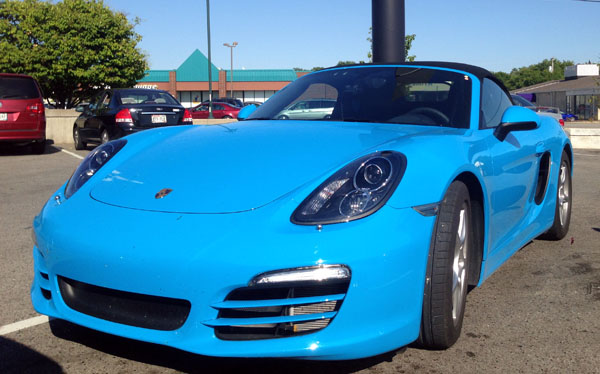

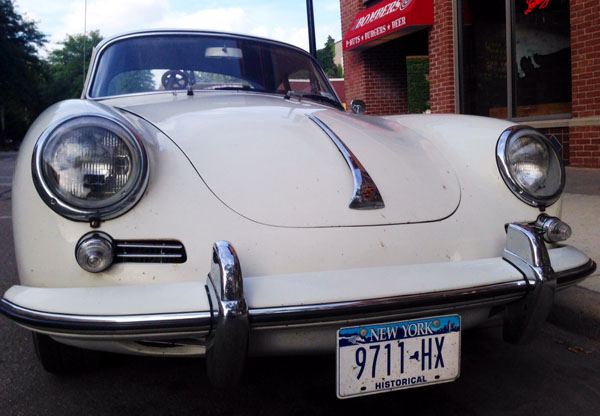
Ford GT: Blazing Red
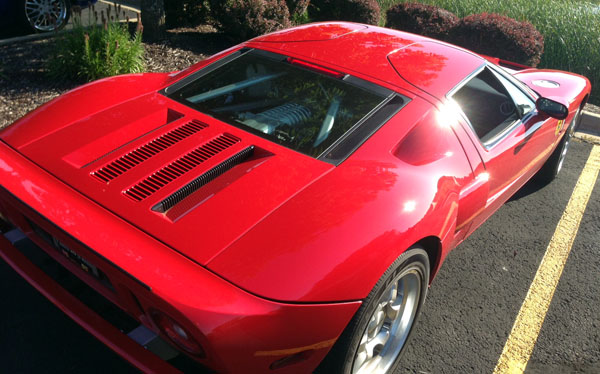

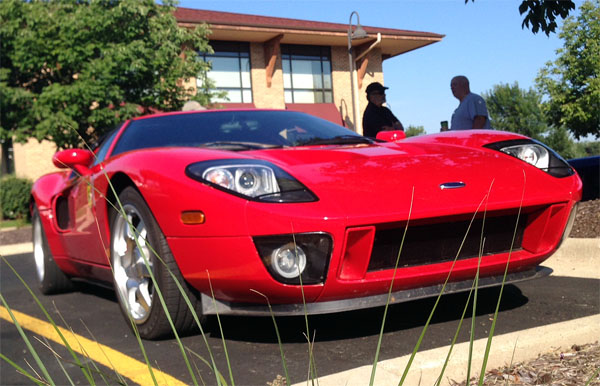
A “statement car” from Ford, produced from 2004 to 2006 and inspired by the all conquering GT40.
Shopping for one of the 4,038 produced? Bring $ix figures.
Bradley GT Electric Car Encounter
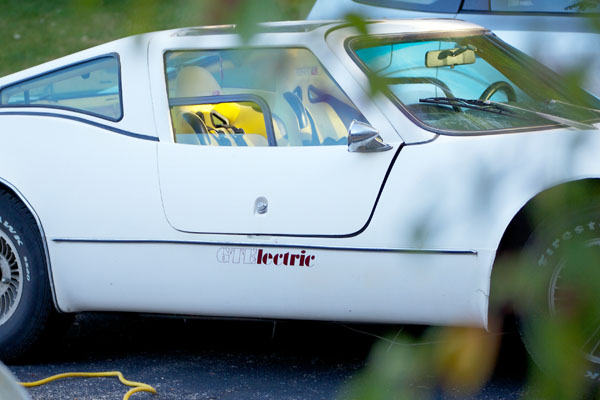
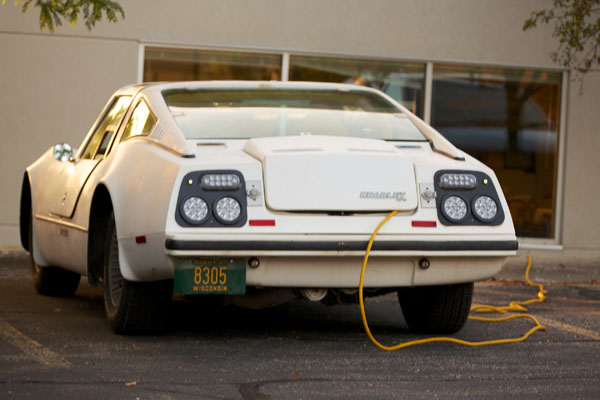
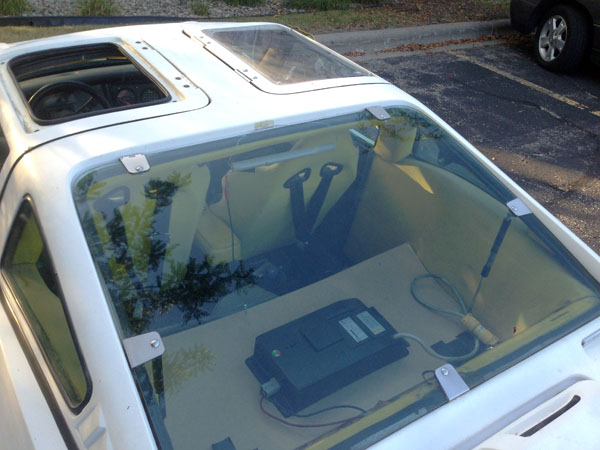

On our way to a glorious outdoor concert recently, I parked next to the obscure Bradley GT electric kit car.
A timely reminder that electric cars have had a few stops and starts over the decades.
Bradley Automotive via wikipedia:
The production run of the Bradley GT was from 1971 to 1981 according to the BradleyGT.com website and owners of the last GT II vehicles to be produced although many of the parts for the vehicles may date back to Volkswagens, Chevy Corvairs and other vehicles from the 1960s.
EV Adventure! 24 hours with an electric vehicle: What it’s like to drive one, and what it’s like to “Drive Now” in the Bay Area.
I recently had the opportunity to spend a day (24 hours) with an all-electric BMW ActiveE sedan. After having had the chance to also drive a friend’s Tesla Model S a few weeks prior, I must say that these electric vehicles the most comfortable and quiet cars that I have ever been in. I am definitely excited to see where “EV’s” are in 10-20 years, and if it weren’t for their current limited travel range (due to energy storage constraints), I feel like I could recommend them to everyone.
I rented this BMW ActiveE through a new service here in San Francisco called Drive Now, which is offered by BMW directly and provides cars that are billed to the users by the minute. It costs just $39 USD to join for a lifetime membership, and because they do not accept advance reservations, there are usually plenty of cars available. You can grab any one of their available cars, drive it, end the reservation, and only be billed for the exact usage in between at their published rates. Cool, right? — The vehicles are equipped with a built-in Android smartphone (mounted behind the gear lever) that handles all of the vehicle’s reservation details and its connection with your Drive Now account. Enter your 4-digit passcode, and begin your driving experience!
Mercedes Is Testing Google Glass Integration, iOS Dominant Platform for M-B Owners
I put the car in park, unplug the phone, and put Google Glass on my face. Within seconds, I’ve got step-by-step directions to a coffee shop down the street beamed directly to my eyeballs. This is what Mercedes-Benz has planned for the future, and not only do they have a functioning prototype, they’re working with Google to make it a reality.
It’s called “Door-to-Door Navigation,” and it’s just the latest in a string of high-tech pushes the automaker has made in the past few years. It started with Mercedes doubling its resources and employees at its Silicon Valley research center, which allowed the automaker to work on a thoroughly revised infotainment platform and develop one of the first comprehensive integrations of Apple’s iPhone into its entry level and youth-focused CLA.
Via Ben Thompson.
Restoring Trust in Government and the Internet
In July 2012, responding to allegations that the video-chat service Skype — owned by Microsoft — was changing its protocols to make it possible for the government to eavesdrop on users, Corporate Vice President Mark Gillett took to the company’s blog to deny it.
Turns out that wasn’t quite true.
Or at least he — or the company’s lawyers — carefully crafted a statement that could be defended as true while completely deceiving the reader. You see, Skype wasn’t changing its protocols to make it possible for the government to eavesdrop on users, because the government was already able to eavesdrop on users.
At a Senate hearing in March, Director of National Intelligence James Clapper assured the committee that his agency didn’t collect data on hundreds of millions of Americans. He was lying, too. He later defended his lie by inventing a new definition of the word “collect,” an excuse that didn’t even pass the laugh test.
As Edward Snowden’s documents reveal more about the NSA’s activities, it’s becoming clear that we can’t trust anything anyone official says about these programs.
Google and Facebook insist that the NSA has no “direct access” to their servers. Of course not; the smart way for the NSA to get all the data is through sniffers.
America’s doctors, like Wall Street, need a cultural shift
How can America cut its healthcare costs? The question is generating political heat in Washington right now. No wonder. Healthcare spending now stands at an eye-popping 17 per cent of US gross domestic product. And next year, President Barack Obama’s divisive “Obamacare” reforms will take effect, extending insurance to a much wider part of the population than ever before.
But as politicians trade ideas (and insults) about cutting costs – with proposals ranging from better use of information technology through to insurance exchanges – there is another issue that needs to be discussed: doctors’ pay.
In recent years, doctors in America have received relatively high levels of remuneration, running about 60 per cent higher than the industrialised world average, according to data from the Paris-based OECD. But the absolute pay level is not the key issue at stake. What really needs to be debated is the system of incentives.
Most notably, in recent years about two-thirds of US doctors have been paid according to a “fee-for-service” system, meaning that they receive remuneration every time they see a patient or provide a treatment.
Entrepreneurs Turn Oligarchs
Once, we saw the potential unsurpassed human liberation available through information technology. However, Silicon Valley, as shown in the NSA scandal, increasingly has become intimately tied to the surveillance state. Technology has enabled powerful firms – including Verizon, Apple, Facebook, Microsoft and Google – to channel everyone’s email and cellphone calls to the national security apparatus.
“It’s as bad as reading your diary,” Joss Wright, a researcher with the Oxford Internet Institute, recently told the Associated Press, adding, “It’s far worse than reading your diary. Because you don’t write everything in your diary.”
Nor does the snooping relate only to national security. If my emails to friends and family arguably constitute a potential threat to national security, that’s one thing. The massive monitoring and largely unapproved tapping into our data for profit is quite another.
Google, which, in the first half of 2012, took in more advertising dollars than all U.S. magazines and newspapers combined, has amassed an impressive list of privacy violations, notes the Huffington Post. Even the innocent-seeming Gmail service is used to collect and sell information; Google’s crew in Palo Alto may know more about the casual user than most of us suspect.
Even Apple, arguably the most iconic Silicon Valley firm, has been hauled in front of courts for alleged privacy violations. For its part, Consumer Reports recently detailed Facebook’s pervasive privacy breaches, including misuse of information as detailed as health conditions, details an insurer could use against you, when someone is going out of town (convenient for burglars), as well as information pertaining to everything from sexual orientation to religious and ethnic affiliation.
Despite ritual denials about such invasions of privacy, the new communications moguls have little reason to stop, and lots of financial reasons to continue. As for concerns over privacy, the new oligarchs take something of a blasé attitude. Eric Schmidt, Google’s chairman, in 2009 responded to concerns over privacy with this gem: “If you have something that you don’t want anyone to know, maybe you shouldn’t be doing it in the first place.”